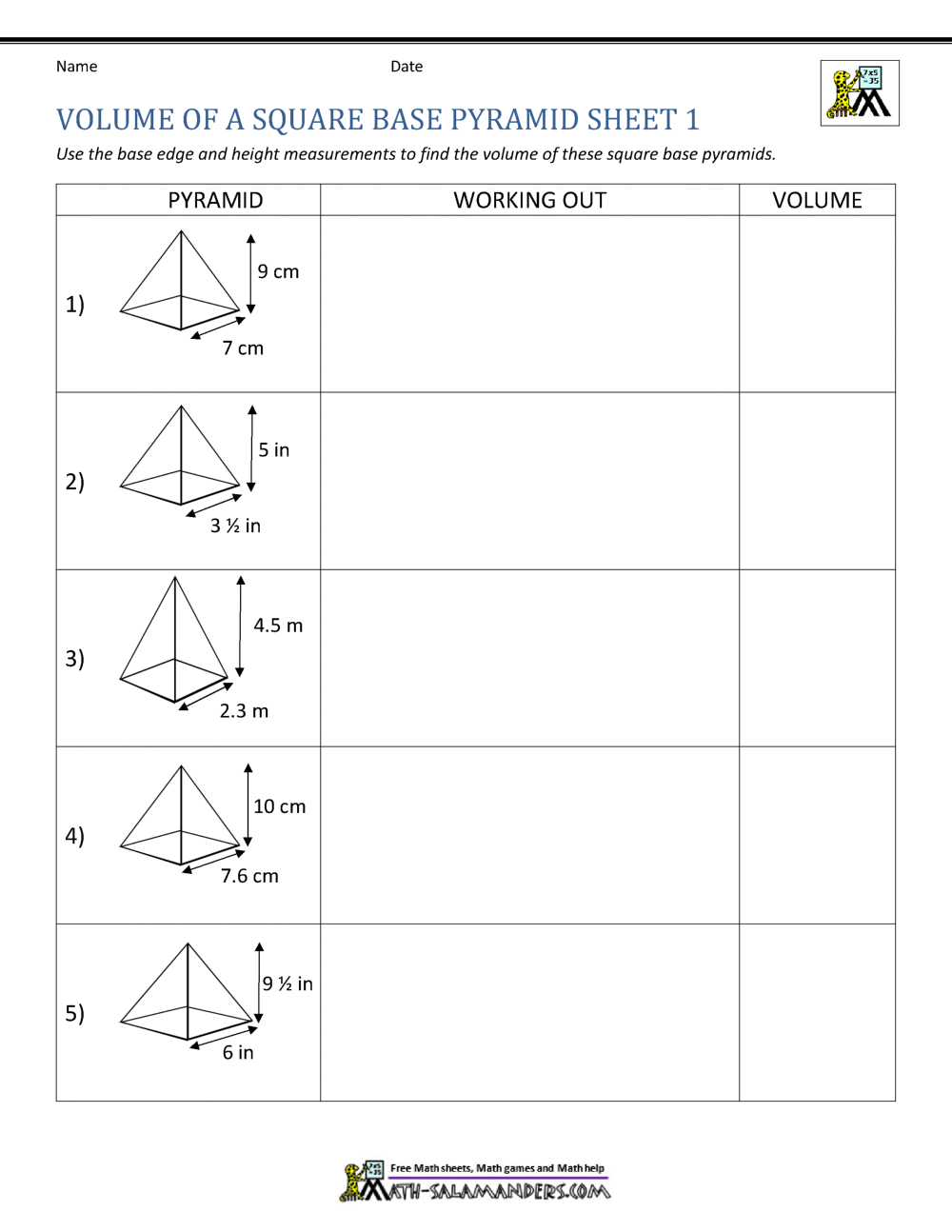Geometry can often seem like a mysterious realm of shapes and formulas, but with a little guidance, anyone can master its concepts. One such concept is the volume of a pyramid, a fundamental topic in mathematics that holds significance in both academic and real-world applications. In this article, we will delve deep into understanding the volume of a pyramid, providing you with the tools and knowledge to tackle any problem with confidence.
Key Takeaways
- The volume of a pyramid can be calculated using the formula: V = (1/3) * Base Area * Height.
- Understanding the base area and height is crucial for accurately determining the volume.
- Different types of pyramids, such as square, rectangular, and triangular, have specific considerations for calculating volume.
- Practical applications of pyramid volume calculations include architecture, engineering, and design.
Understanding the Basics: What is a Pyramid?
A pyramid is a three-dimensional geometric shape with a polygonal base and triangular faces that converge at a single point called the apex. The most common pyramids include the square pyramid, where the base is a square, and the triangular pyramid, also known as a tetrahedron, where the base is a triangle.
Components of a Pyramid
- Base: The flat surface on which the pyramid stands. The shape of the base determines the type of pyramid.
- Height: The perpendicular distance from the apex to the center of the base.
- Apex: The topmost point where all triangular faces meet.
- Slant Height: The diagonal distance from the apex to the midpoint of a base edge.
The Formula for Calculating the Volume of a Pyramid
The volume of a pyramid is determined by the formula:
V = (1/3) * Base Area * Height
This formula indicates that the volume is one-third the product of the base area and the height of the pyramid. This relationship highlights the pyramid’s unique property compared to other three-dimensional shapes, such as prisms.
Calculating the Base Area

The base area depends on the shape of the base:
- Square Base: The area is calculated by squaring the length of one side. Area = side²
- Rectangular Base: The area is the product of the length and width. Area = length * width
- Triangular Base: The area is calculated using the formula for the area of a triangle. Area = (1/2) * base * height
Once the base area is determined, it can be substituted into the volume formula.
Step-by-Step Guide: Calculating the Volume of a Pyramid
Let’s walk through an example to solidify our understanding:

Example: Calculating the Volume of a Square Pyramid
Suppose we have a square pyramid with a base side length of 4 meters and a height of 9 meters. To find the volume:
- Calculate the base area: Area = side² = 4m * 4m = 16m²
- Use the volume formula: V = (1/3) * Base Area * Height = (1/3) * 16m² * 9m = 48m³
Thus, the volume of the pyramid is 48 cubic meters.

Applications of Pyramid Volume Calculations
Understanding how to calculate the volume of a pyramid is not just an academic exercise; it has practical applications in various fields:

- Architecture: Pyramidal structures, such as roofs and monuments, require precise volume calculations for material estimation.
- Engineering: Engineers use these calculations in designing structures and components that incorporate pyramidal shapes.
- Design: Artists and designers often employ pyramidal forms in sculptures and installations, necessitating accurate volume assessments.
Common Mistakes and How to Avoid Them
While calculating the volume of a pyramid is straightforward, certain pitfalls can lead to errors:
- Misidentifying the Base Shape: Ensure you correctly identify the shape of the base to use the appropriate formula for the area.
- Incorrect Height Measurement: The height must be perpendicular to the base, not the slant height.
- Omitting Units: Always include units in your calculations to maintain accuracy and clarity.
Mastering the Volume of a Pyramid
By understanding the formula and components involved, calculating the volume of a pyramid becomes an accessible and valuable skill. Whether you’re a student tackling geometry problems or a professional applying these concepts in your field, mastering this topic opens the door to a deeper comprehension of geometric principles.
Remember, the key to success lies in accurately determining the base area and height, applying the formula correctly, and avoiding common mistakes. With practice, you’ll find that calculating the volume of a pyramid is a straightforward and rewarding task.
Embrace the challenge, and let your newfound knowledge of pyramids elevate your understanding of the fascinating world of geometry!